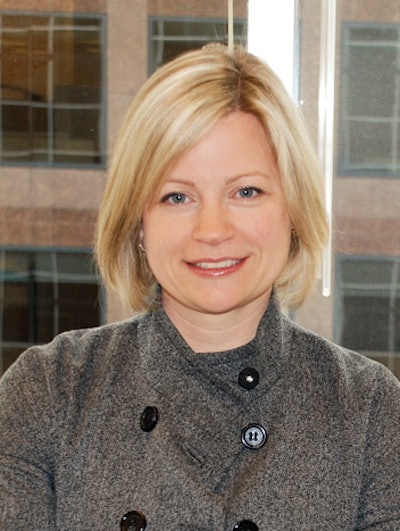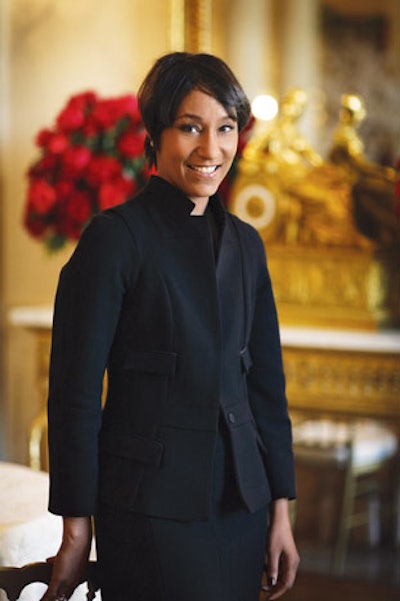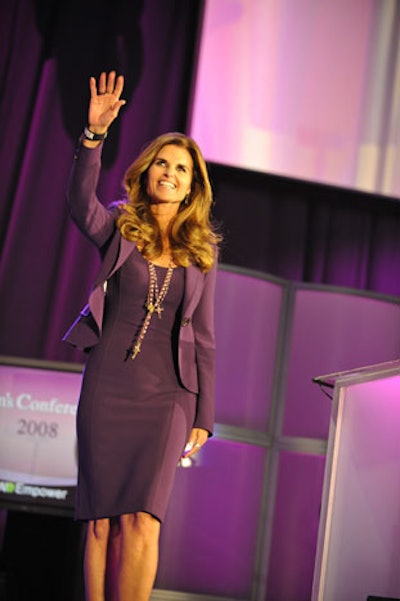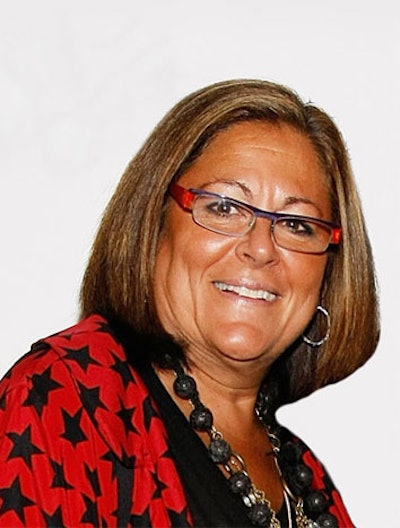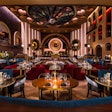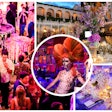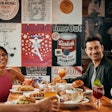In a year chock full of great ideas, here's a look at eight individuals who reinvented the events wheel, continued to deliver on a standard, and created successful strategies in a time of dwindling budgets.
Fashioning a New Home
Tasked with finding a new location for one of New York’s largest and most publicized trade shows, IMG Fashion senior vice president Fern Mallis spent years scouting a location for Fashion Week. Assisted by the mayor’s office and the Council of Fashion Designers of America, Mallis settled on Lincoln Center’s Damrosch Park, which, when the biannual series moves there in September, will provide 25 percent more room than Bryant Park and place the festivities alongside other creative disciplines.
“I think Lincoln Center is going to be great,” Mallis said earlier this year. “We have time to get it all fine-tuned, and we couldn’t be asking for a more iconic, successful, and important location that elevates the event while continuing to bring it a new layer of notoriety, by being next to the opera, dance, ballet, music, and symphonies. And it’s pretty fabulous.”
Woman’s Work
The Women’s Conference, hosted by Maria Shriver and California governor Arnold Schwarzenegger, continues to grow like, you might say, a California wildfire. The 2009 event, held in October in Long Beach, sold out in a record time of less than two hours and brought in more than 80 speakers and participants, including Madeleine Albright, F.D.I.C. chairwoman Sheila Bair, and Katie Couric. A new event dubbed “A Day of Transformation” expanded the program into two full days to meet attendance demands. A former journalist, Shriver took a hands-on role to encourage news-making moments; in 2009, she broke from her typical keynote speaking role to lead a conversation on grief and resilience with Kelly Preston, Elizabeth Edwards, and Susan St. James.
“I am honored to host what has become the nation’s premier forum for women, and I am floored by the support and enthusiasm,” Shriver said in a release. “Demand was so great that when tickets went on sale, our server crashed from the hundreds of thousands of simultaneous requests. We are so pleased that so many women want to be a part of the conference community, and we try to expand every year to reach more and more women.”
Hunting—and Gathering—More Sponsors
For the fifth annual Miami Beach Polo World Cup this spring, the event’s creator, Bruce Orosz, increased sponsorship dollars for the tournament by 20 percent. Among the 47 companies participating—17 more than last year—were Audi, Comcast, and Grey Goose. Orosz, C.E.O. of the Polo Life L.L.C., also expanded the three days of matches with a daylong women’s tournament before the men’s competition, which helped increase attendance by more than a third, to some 6,400 people.
“We changed our entire sponsorship acquisition process,” Orosz said. “We started making calls right after last year’s tournament ended, which was about six months earlier than we’d done previously, and reached out to probably 50 to 60 companies—twice as many as last year—resulting in a 20 percent increase overall from 2008. I’ve come to the conclusion that securing sponsors comes down to the timing of the calls, increased sales efforts, and the event’s history.”
Political Parties
[Note: We compiled our Best of 2009 package earlier this year, before White House Social Secretary Desirée Rogers came under fire following the Obama administration's first state dinner. Industry professionals have mixed feelings about her performance now.]
Desirée Rogers is helping set the Obama agenda by reinventing the way the president produces and hosts events. Since entering the White House in January, social secretary Rogers has set her sights on opening “the people’s house,” as the Obamas call it, to the masses by making formerly closed-door affairs more accessible to the public. This is an administration that sees how events can make powerful statements about its style and priorities. By June, Rogers had produced more than 150 events, often reenergizing those that had become tired under previous administrations. Among them were this year’s Governors Ball, where she brought in Earth, Wind & Fire and got the crowd dancing (a first), and the Easter Egg Roll, which she amped up with yoga, hip-hop, and Fergie (another first).
“We don’t want to be stale, we don’t want to be boring,” Rogers said earlier this year. “We don’t want to repeat things over and over. This first year we are really trying to lay the foundation, to set the standard.”
Buzz Worthy
Heather Hope-Allison is the brains behind the Buzz Girls, a group of high-level professional women working in Los Angeles and New York in entertainment, media, and lifestyle fields, who gather at invitation-only events to network, sample products from partner companies, and discuss projects and trends. She hosted one event in 2007, five in 2008, and this year increased the program to 14 events in L.A. and Las Vegas, with partners like Marie Claire, Kenneth Cole, Allure, and the Venetian and Palazzo resorts. Now, nearly every guest who R.S.V.P.s for a Buzz Girls event shows up—and a no-plus-one policy facilitates real networking. Events vary in size, hovering around 50 to 75 guests—and nearly all are at capacity.
“I created the Buzz Girls organically, motivated by a sincere desire to get influential friends and associates together to network and discuss business opportunities. Every event is personal and meaningful to me, and I am continually impressed by the amazing women involved and the brands who feel it’s as valuable as I do. Some companies, like Cosabella, have introduced a new product to us before it even hits the market, to get feedback. And we have a high return rate of participating brands; around 50 percent of each gift bag features brands that we’ve had at past events.”
From the Heart
As the brand building manager for Becel, founding sponsor of the Heart & Stroke Foundation’s “Heart Truth” campaign, Margaret McKellar collaborated with Toronto-based agency Capital C to create the Love Your Heart benefit concerts that were held in Toronto and Montreal on April 23 and simulcast live to 109 movie theatres across the country.
More than 35,000 women won tickets to attend by entering a code from specially marked packages of Becel at loveyourheart.ca. With every code entered, Becel donated $1 to the Heart & Stroke Foundation.
“The challenge with something like talking about a disease is really getting people to hear the message, because it is a scary message,” McKellar said. “We wanted to use celebrity and entertainment as a way of getting people to engage, as a way of being able to deliver positive messages about how much control you have over heart disease.”
Thoroughly Modern
Overseeing 26 events in a year would be a plateful, but Linsey Foster, director of constituent relations at the Art Institute of Chicago, worked as many in 10 days. In May, the museum opened its modern wing with fanfare that ranged from intimate dinner parties to a gala with 1,100 guests. The festivities’ preparation demanded months of overtime from Foster’s team, but by staying mindful of positive reinforcement—and throwing in morale-boosters such as employee cocktail parties—Foster protected her staffers from burnout.
“I had to make sure that responsibilities were delegated to responsible people,” Foster said. “There is no way one person can manage all the elements of something like this—or any large event, for that matter. Find good, responsible people, let them own a piece of the puzzle, and then hold them accountable. I surrounded myself with enthusiastic, competent, and most importantly, positive people.”
Rapid Response
In an effort to adjust to the economic climate and reinvent its benefit this year, the New York-based Robin Hood Foundation scrapped its signature live auction of showy lots like a yoga session with Gwyneth Paltrow. Instead, the organization encouraged guests to make individual donations via wireless devices from IML that didn’t put the size of donors’ gifts in the spotlight. The move paid off: The event raised a record $72.6 million for the organization, $16.1 million more than the year before. Behind the strategy was senior vice president of development Mark Bezos, who made the decision to bring in the electronic gadgets.
“Historically at the Robin Hood benefit, about 3 percent of the room participated in the auctions,” Bezos said. “This year, we had over 70 percent of the room participate using IML’s devices.”

